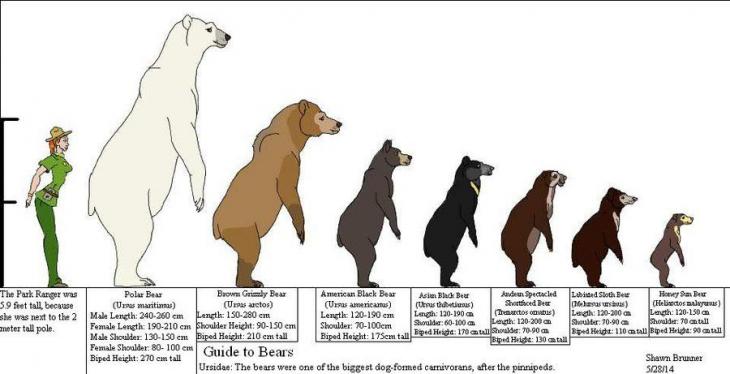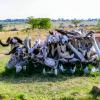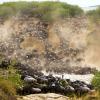12 world's biggest / largest bear species
1. Polar bear
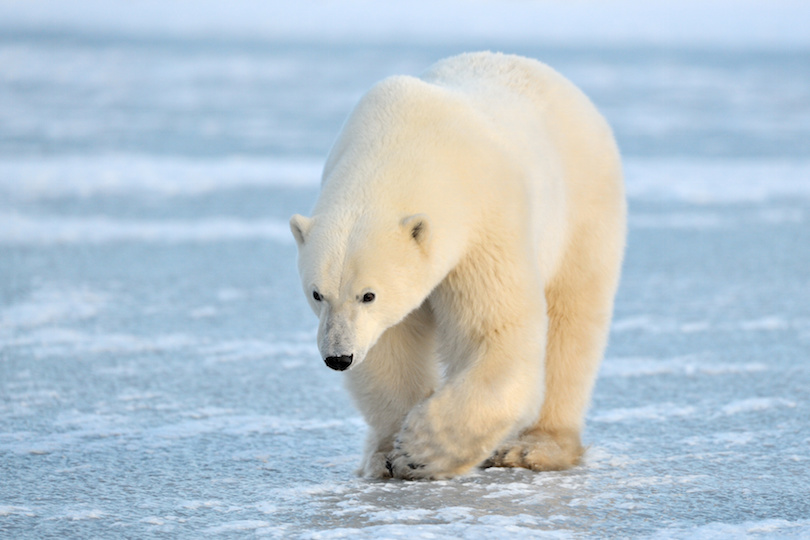
The polar bear is the world's largest bear species, along with the Kodiak bear. It's the same size as a Kodiak bear, but white rather than brown. Polar bears can be found mostly north of the Arctic Circle, where they've adapted to life in the freezing tundra. They are born on land but spend most of their lives on sea ice, where seals provide the majority of their food. Climate change is causing their habitat to melt, making them a vulnerable species.
2. Kodiak bear
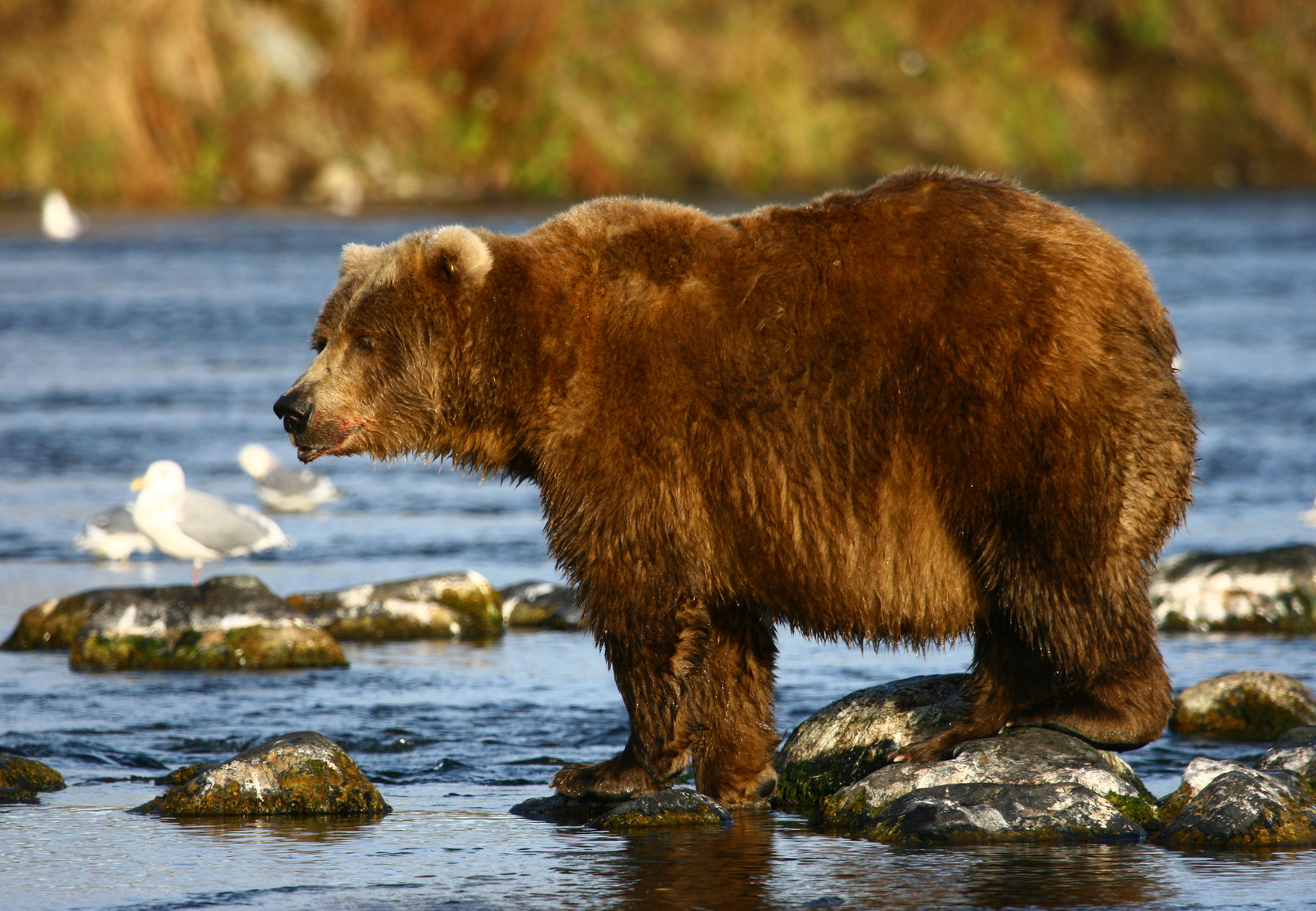
The Kodiak bear, the world's largest brown bear, is found only on Alaska's Kodiak islands. Even though they eat the same things as regular brown bears, they can weigh up to 1,500 pounds and stand about 10 feet tall when standing upright. Young bears have a white ring around their necks for a few years; they are normally brown but can be golden. Yes, they attack humans, albeit they are more likely to attack people.
3. Kamchatka brown bear
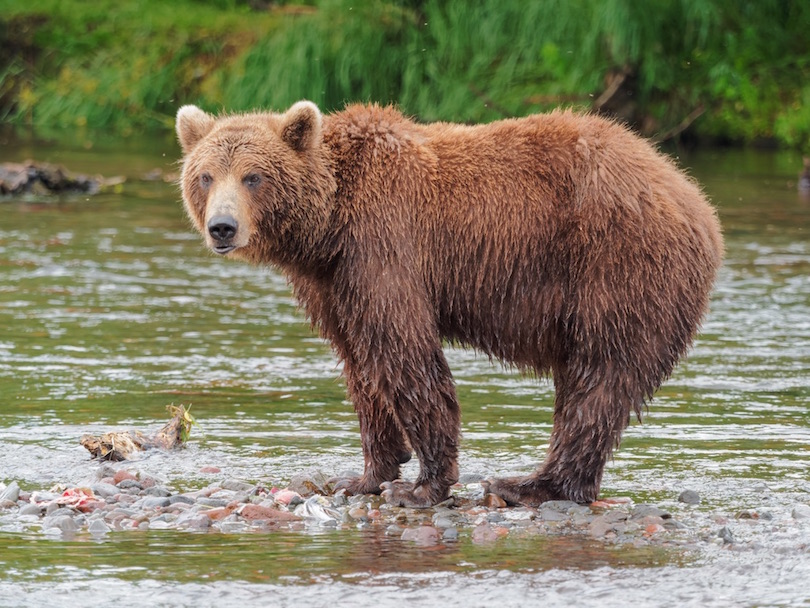
The largest bear in Eurasia, the Kamchatka brown bear, can be found in Russia's Kamchatka region and adjacent islands, as well as Alaska's Saint Lawrence Island in the Bering Sea. It's a large bear, with a height of up to 9 feet and a weight of about 1,500 pounds. It is thought to be the Kodiak bear's ancestor. They eat berries, nuts, and, ideally, fish that they catch themselves, depending on the season. They rarely attack humans, but they are prized by Russian hunters as trophy bears.
4. Ussuri brown bear
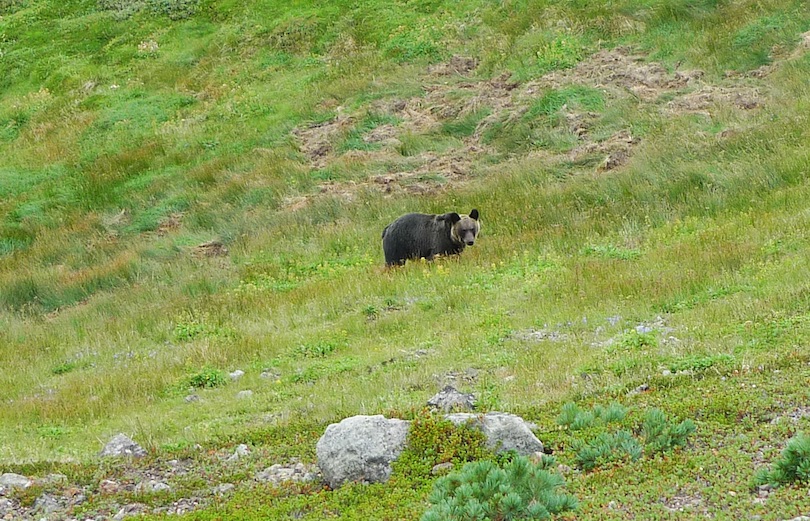
The Ussuri brown bear, sometimes known as the black grizzly, is one of the largest brown bears. They are native to Russia's northeast Asia region. Females with cubs stay near fisherman on Japan's Hokkaido Island's Shiretoko Peninsula, purportedly to escape adult male bears. Their numbers are dwindling in northeast China, where they are targeted for body parts, while they are protected in North Korea as national monuments. They've been known to assault and even murder humans, while Siberian tigers have been known to turn them into supper on occasion.
5. Grizzly bear
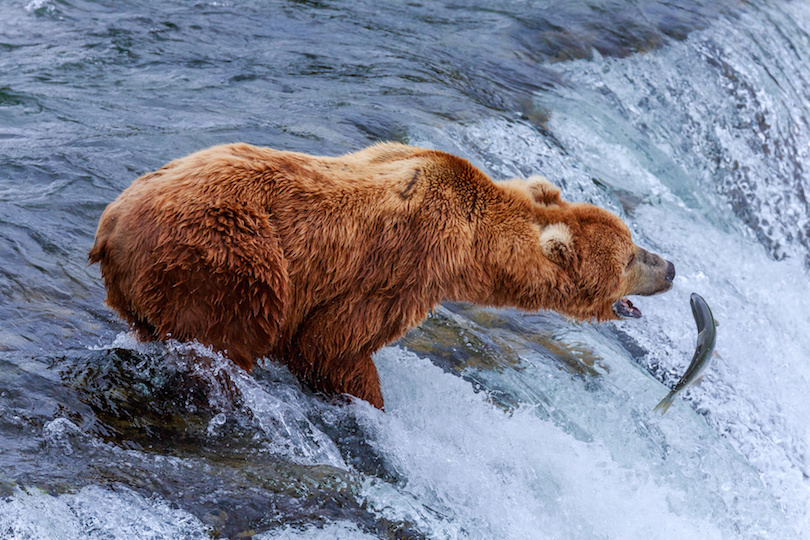
This bear isn't the subject of terrifying movies for nothing. Ursus horriblis, the Latin name for the grizzly bear, meaning "terrifying bear." Because of its gray-tipped hair, the grizzly bear is sometimes known as the silvertip bear, and because it is the same species as the North American brown bear. It's fierce and massive, whatever you call it — males weigh about 800 pounds and stand over 6 feet tall. Grizzlies can be a variety of colors, ranging from blond to practically black, but most are brown. On their shoulders, they feature a distinct hump.
6. Eurasian brown bear
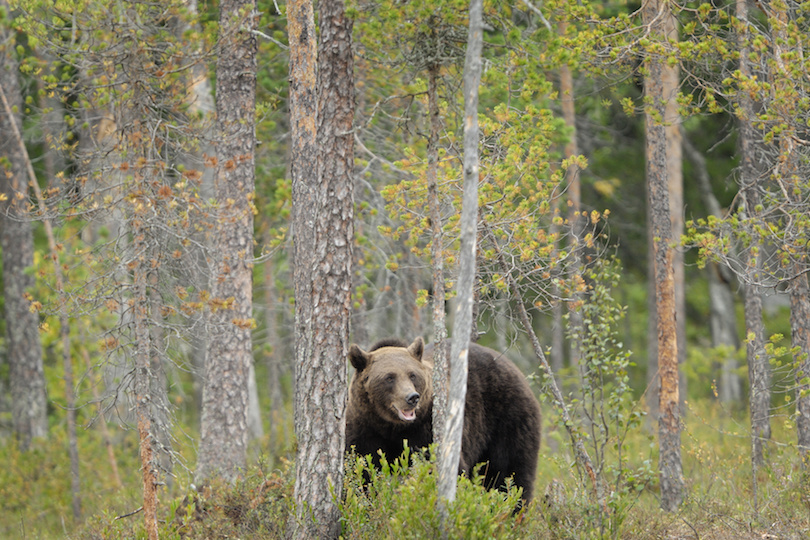
The Eurasian brown bear, sometimes known as the European brown bear, is found throughout northern Europe's mountainous regions, as well as as far south as the Pyrenees. The Siberian woodlands are home to the biggest population. By 1000 AD, the bear had been hunted to extinction in Britain. These bears used to fight in arenas, which the ancient Romans loved to watch. The bear has long shaggy brown hair in varied hues. The names of two constellations, Ursa Major and Ursa Minor, were inspired by this bear.
7. American black bear
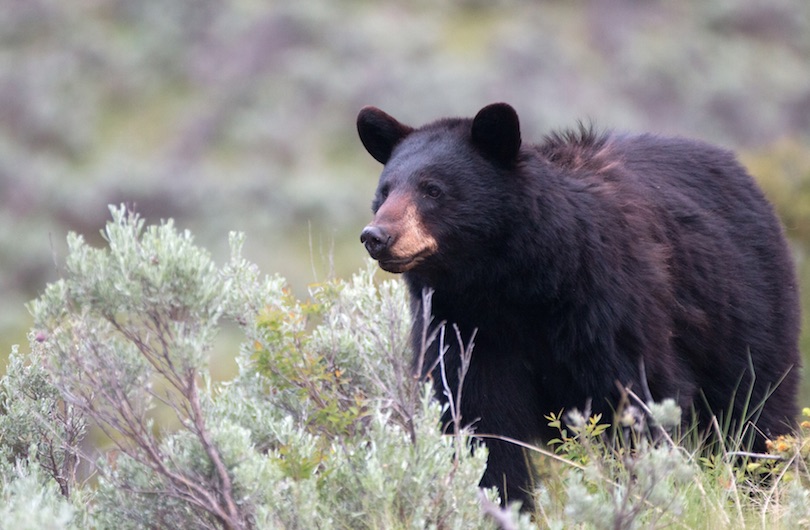
The American black bear is the smallest bear species on the continent of North America, yet it is the most abundant, with populations ranging from Alaska to Florida and California to Canada's Maritime Provinces. They love forested surroundings and have been known to become linked to human communities due to the abundance of food — they are garbage dump scavengers. Maybe they learned how to open screw-top jars there. Thousands of years ago, the sun bear developed into the American black bear.
8. Spectacled bear
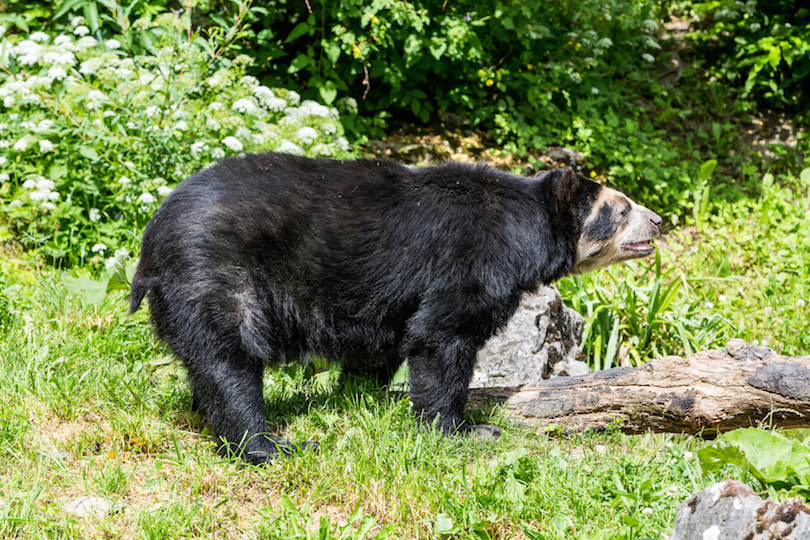
The spectacled bear acquired its name from the rings around its eyes, which give it the appearance of wearing glasses. The spectacled bear is the only bear endemic to South America and is a medium-sized bear. Despite its reputation as a meat eater, the spectacled bear's diet is just about 5% meat. It has black fur, however it can also be brown or reddish in color. It can be found in the Andes Mountains' cloud forests, primarily in South America's northern and western regions.
9. Asian black bear
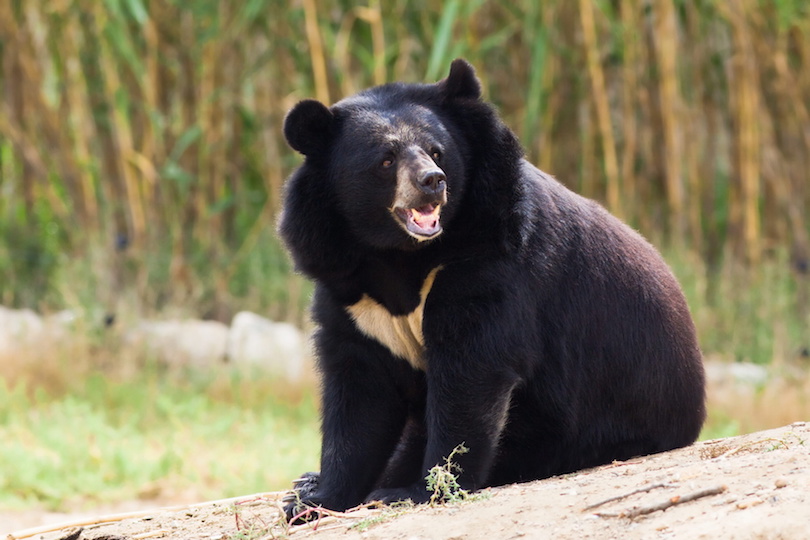
Asian black bears are wary of humans, which is understandable given that they are hunted for body parts and traditional medicines. From Taiwan and northeastern China to the northern Indian subcontinent and the Russian Far East, they can be found in Asia's hilly regions. Because of the V or half-moon shaped white fur on their chest, the Asian black bear is also known as moon bear or white-chested bear. They're a medium-sized bear that looks like prehistoric bears (average 6 feet tall and 300 pounds). They are more erect than other bears.
10. Sloth bear
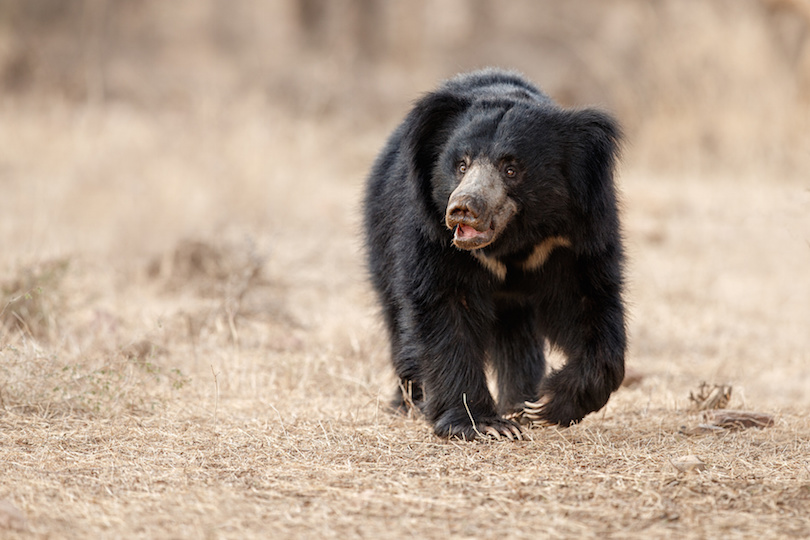
The Indian subcontinent is home to the sloth bear, which developed from the brown bear during the Pleistocene epoch. It's a nocturnal insect-eating bear with a lower lip that sucks in the bugs. The sloth bear has longer fur, pale muzzles with bulbous snouts, and white claws than the Asian black bear. They can weigh up to 290 pounds and stand up to 6 feet tall. Humans who intrude on their domain have been known to be attacked.
11. Giant panda
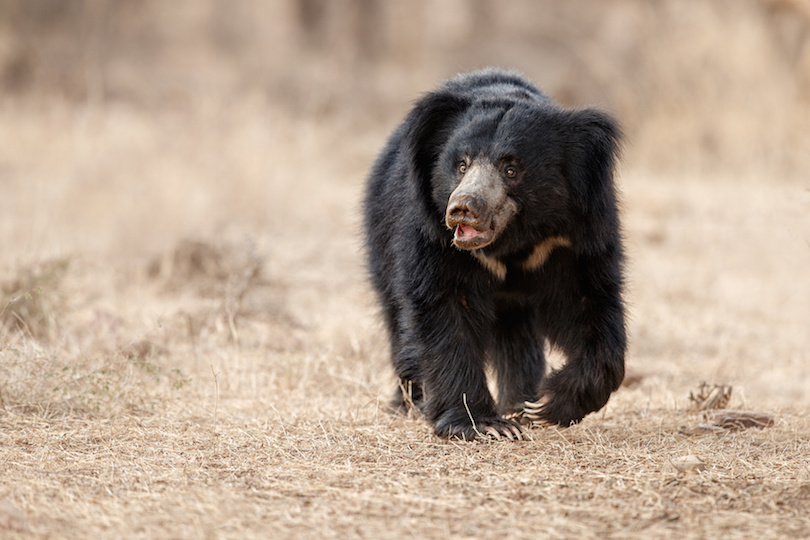
The big panda is the epitome of cuddly and adorable. It has a roly-poly appearance, with a white face and body and black fur around the neck, legs, and ears. The panda, unlike other bears, is almost entirely vegetarian, with bamboo accounting for 99 percent of its diet. The panda is found only in the mountains of south-central China, namely in Sichuan Province. The girth of these obese bears can reach six feet in circumference and they can weigh up to 250 pounds. They are a charming Chinese emblem.
12. Sun Bear
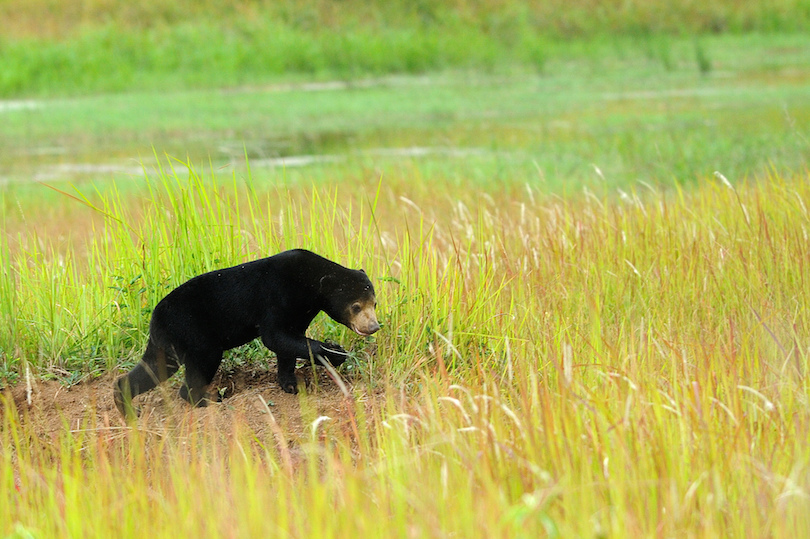
The sun bear is found in Southeast Asia's tropical woodlands. It's known as the Malayan honey bear in Malaysia because of its liking for the delicious sticky stuff. The sun bear is the tiniest bear, weighing around 176 pounds and standing approximately five feet tall. They have short black fur with light-colored muzzles and a white patch over their eyes. The bear's jaws and claws are quite powerful. Its population is falling due to habitat destruction.

